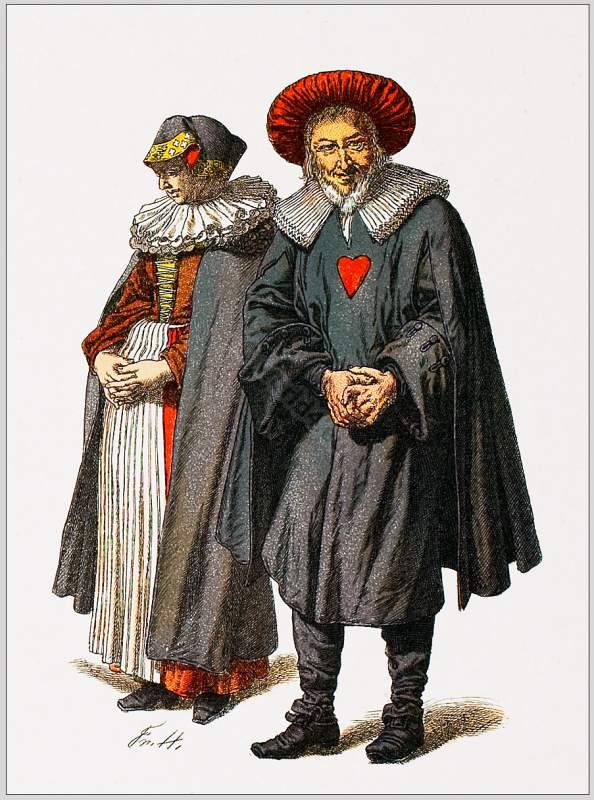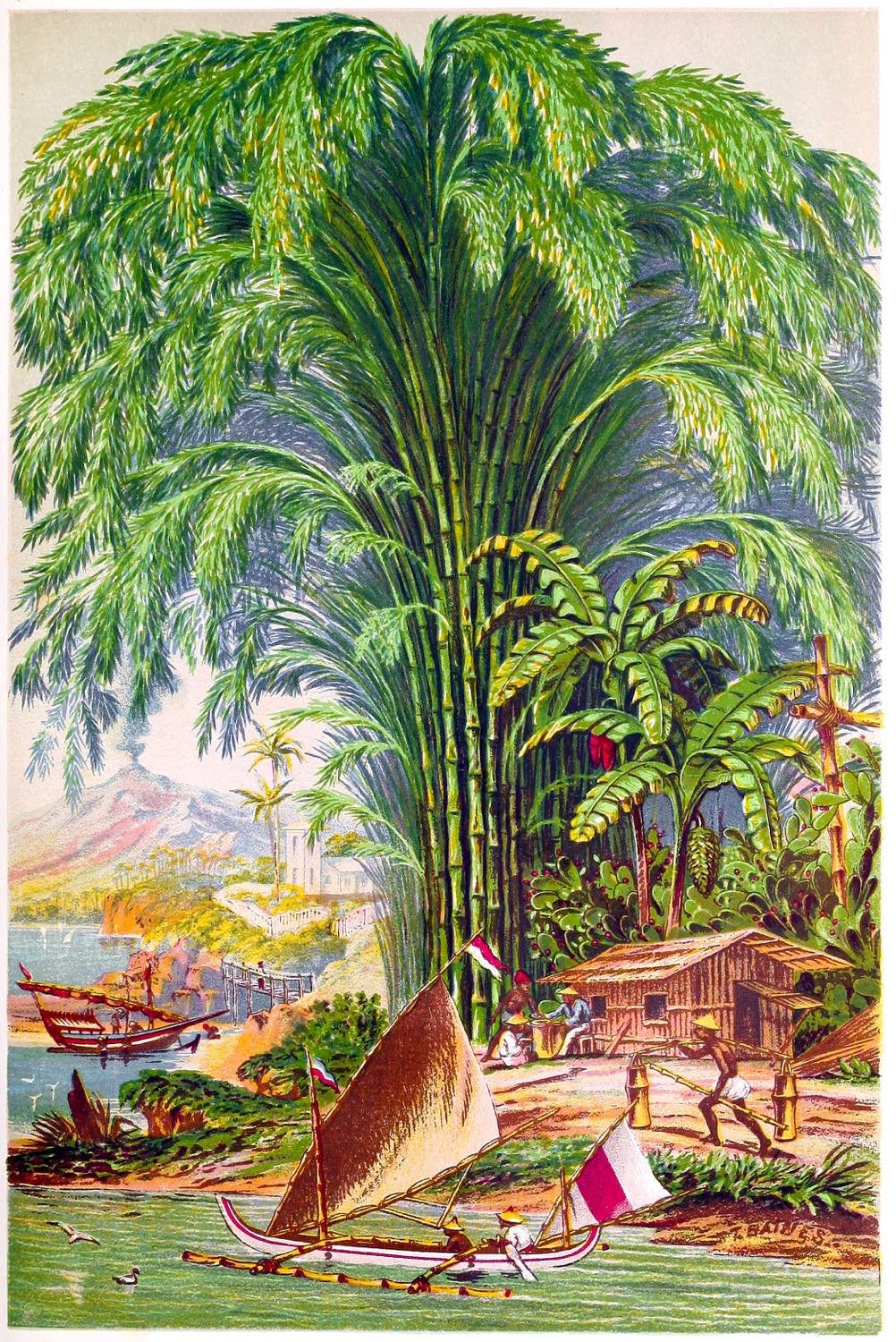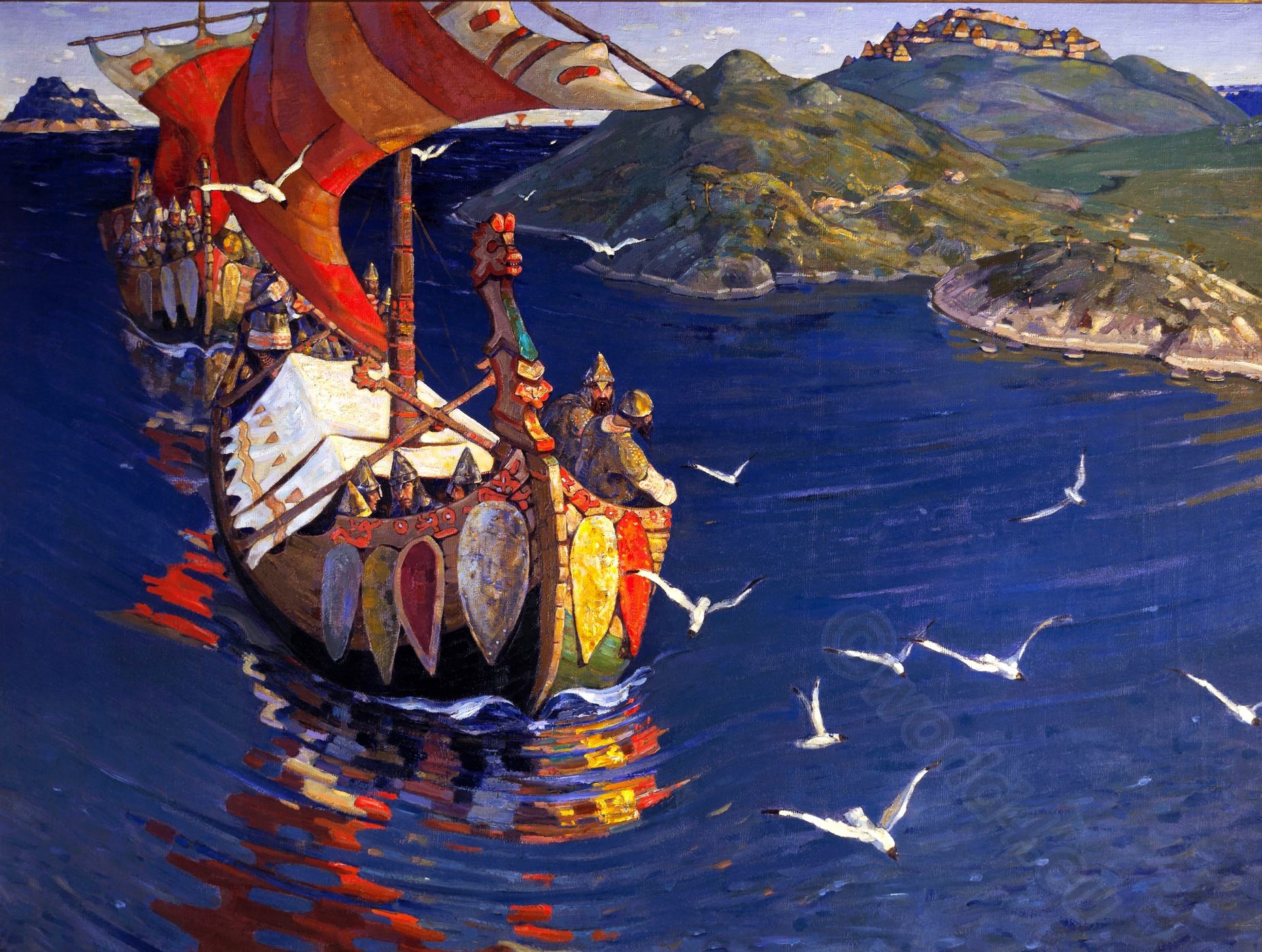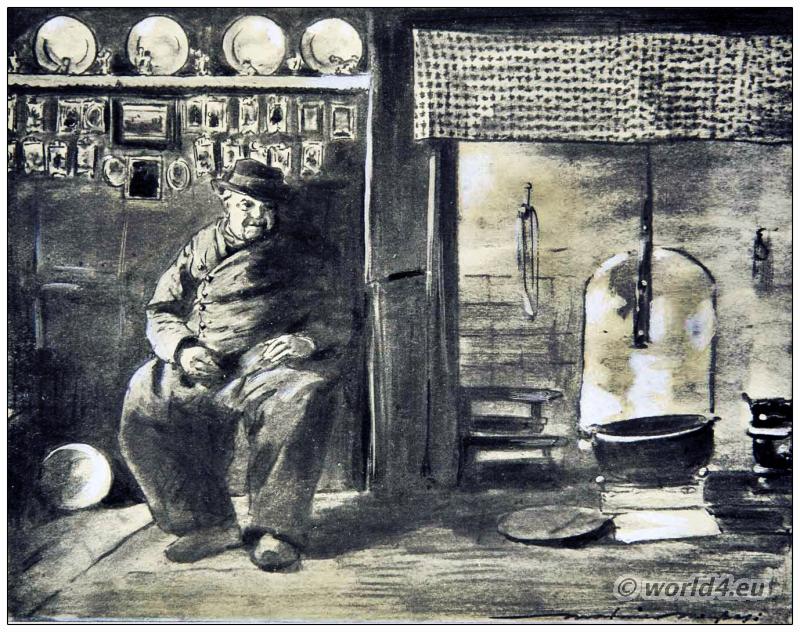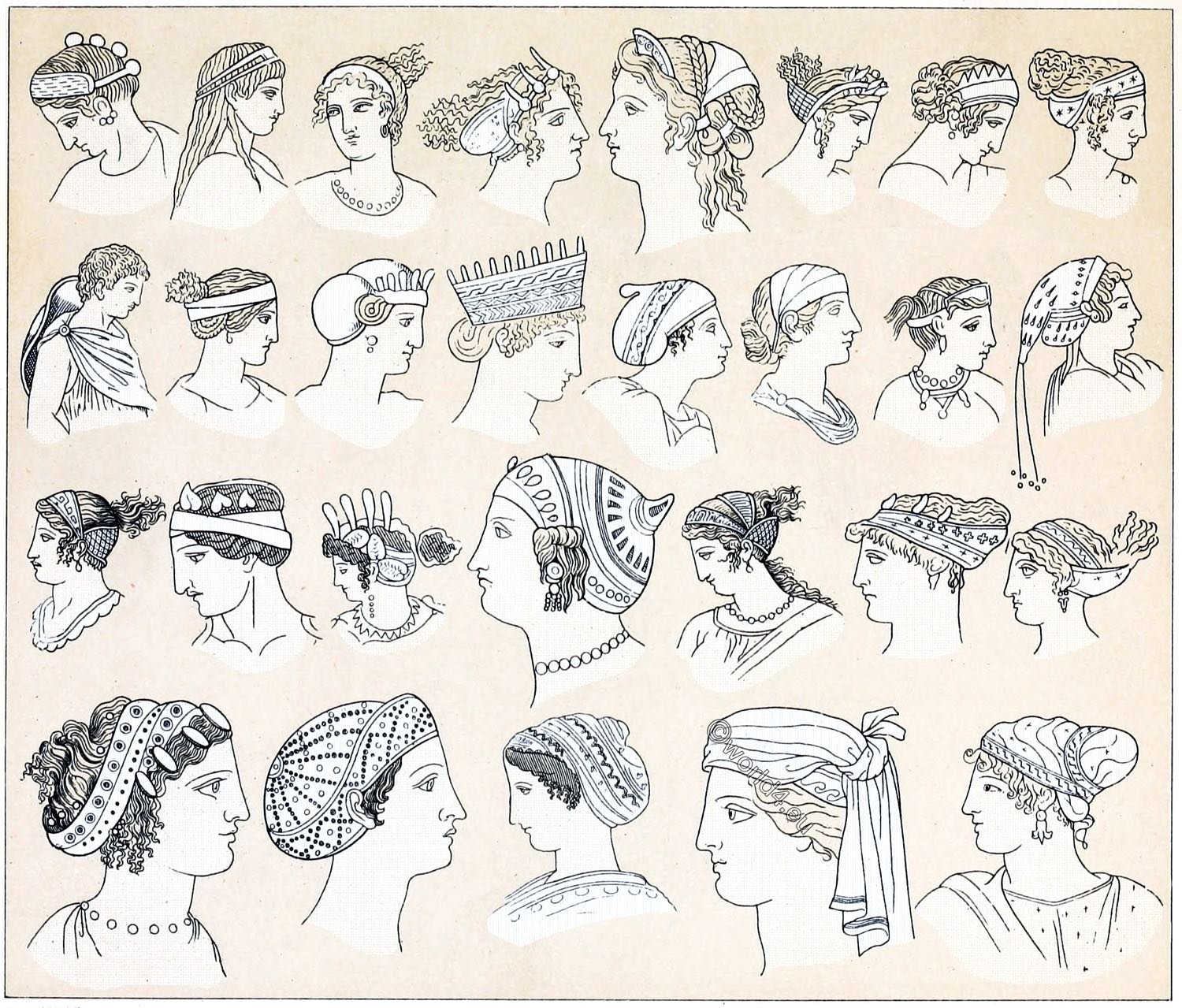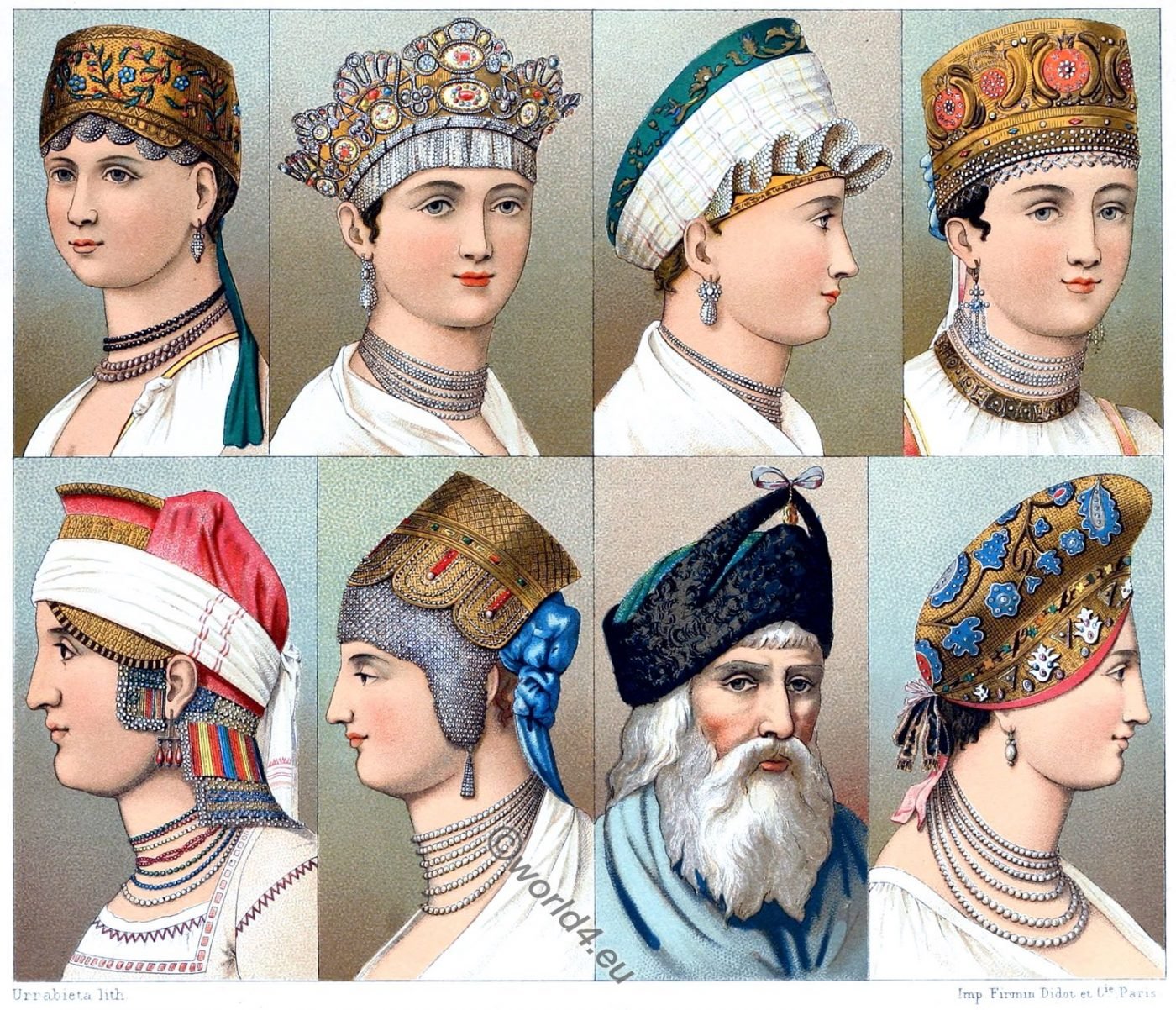
1 2 3 4
5 6 7 8
The traditional costume of Russian women has been preserved in its originality until the beginning of the 20th century. Especially the Kokoshnik (Russian: Коко́шник) has survived all innovations of fashion. The hairstyles depicted here come from the governorates of Novgorod, Kursk and Kaluga.
Residents of the Governorate of Novgorod.
The governorate of Novgorod was a Russian governorate with administrative headquarters in the name-giving city of Novgorod. The governorate was founded on 29 April 1727 by decree of the Russian empress Katharina I.
No 1. Young girl from Ostujna.
Coiffure in embroidered gold fabric set with precious stones. Pearl set in the shape of festoons above the forehead. Scarf falling over the shoulders at the back, pearl earrings set in gold. Necklaces of pearls and amethysts.
No. 3 and 5. Women of Tikhvin (Tikhvin, Russian Тихвин).
No. 3. Yellow fabric cap with gold trimming under a cap covering the neck. The latter is embroidered and wrapped in a kind of turban, followed by a ruffle decorated with pearls. Earrings and necklaces made of pearls.
No. 5. Kokoshnik (in Russian: кокошник) from red, gold-embroidered fabric, embraced by a white turban and provided with a pendant from differently coloured wool strands. Earrings and necklaces made of glass beads.
No. 4. Women of Bielozersk (Belozersk). Cap similar to No. 1. The embroideries form medallions with pearl rosettes on a red ground. Neck cloth made of blue fabric. Earrings of pearls and sapphires; necklaces of pearls. The collar of the shirt has a gold edge.
No. 7. Resident of Tikhvin. Silk cap with Astrachan trimming (wool of the Karakul sheep, also called “Persian”), which can be pulled down and fastened by a violet ribbon with gold tassel under the chin.
Young girl and woman from the governorate of Kursk (Russian Курск).
No. 2. Young girl. Serrated crown covered with gold leafs and set with pearls and precious stones; brow pendants and pearls of various sizes. Earrings and necklaces made of pearls.
No. 8. Married woman. Kokoshnik (in Russian: кокошник) of the married woman, gold ground with white, blue and violet ornaments and pearl and stone set; behind a tuff of pink and black ribbons. Earrings and necklaces made of pearls.
Woman of the Kaluga Government (Russian: Калуга).
No. 6. Brocade diadem set with precious stones. A kind of pearl net, falling over the forehead, temples and cheeks; underneath a blue headscarf with hanging ends. Pearl necklace.
After original pictures, sent by the Russian government to the exhibition of the Geographical Society in Paris, 1875.
Source: History of the costume in chronological development by Auguste Racinet. Edited by Adolf Rosenberg. Berlin 1888.


